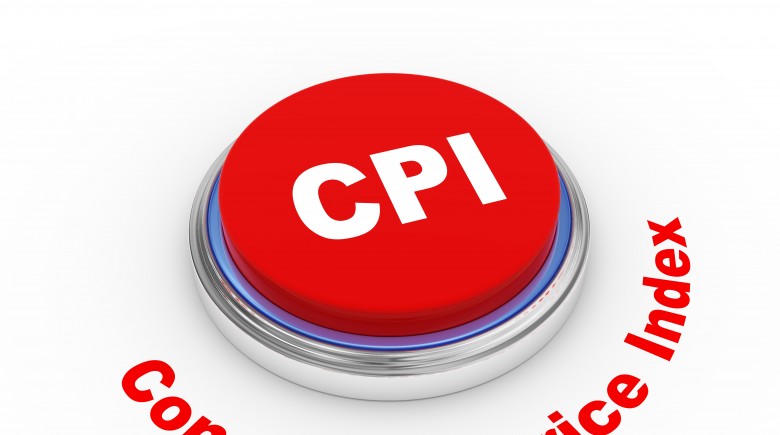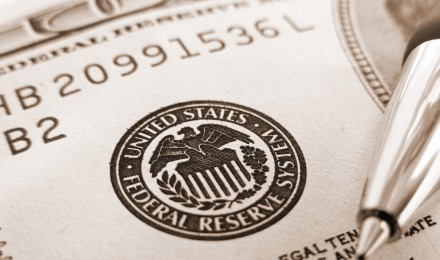At 0.1 percent, the Consumer Price Index increased less than expected in August—the slowest pace in three months, after rising 0.2 percent in July. The Labor Department also reports that the less volatile core index (CPI-all items), which excludes food and fuel costs also rose 0.1 percent.
The latest consumer price index provides another piece of data the Federal Reserve has to consider during its meeting as it relates to their intentions to reduce the amount its spending on the quantitative easing program.
CPI data
Most of the increase for the primary indexes resulted from increases in the cost of shelter and medical care. The same holds true for the core index.
Here are some of the indexes that showed increases:
- Medical care – 0.7 percent
- Shelter – 0. 2 percent
- Food – 0.1 percent
- Apparel – 0.1 percent
Medical care services index experienced its biggest increase since September 2010 at 3.1 percent. The increase in shelter costs— comparable to the renting of a primary residences or what homeowners would charge tenants if they decided to rent their homes—registered its biggest gain since November 2008.
Prescription drugs and tobacco are up. New cars and light trucks remained stable but the used vehicles index declined. The energy index fell 0.3 percent and the airline index decrease the most since November 2008 with a 3.1 percent retreat. Household furnishings and operations also declined. Gasoline prices dropped 0.1 percent.
The all items index, less food and energy costs, declined 1.8 percent year-over-year.
Here are more 12-month readings for core indexes that rose:
- Medical care index – 2.3 percent
- Medical care services – 3.1 percent
- Shelter – 2.4 percent
- New vehicles – 1.1 percent
The core consumer price index is up 1.8 percent on a year-over-year basis for August before seasonal adjustments. The metric recorded a 2 percent increase in July and 1.6 percent for June. After peaking at 2.3 percent in April 2012, the year-over-year core reading has been losing momentum.
The inflation environment
Omair Sharif forecast a 0.1 percent increase in the CPI. The economist for RBS Securities Inc. (Stamford, Connecticut), said prices are “still pretty benign, but I think from the Fed’s point of view they’re moving in the right direction.”
The chief executive officer of Hanesbrands Inc. Richard Noll stated in a conference call that he believes we are on the cusp of a “moderately inflationary environment,” which would please the Federal Reserve Chairman Benjamin Bernanke.
Bernanke has expressed concerns about the economic consequences of an extended period of inflation below the Fed target rate of 2 percent. According to Bernanke, low inflation slows down the economy by restraining business investment and may lead to “outright deflation,” causing prices to fall. An inflation rate that is too low threatens economic performance. Bernanke states that the Fed will maintain a close watch on this matter.
Over the next few days, the Fed will determine if recent economic data, which show strong demand for homes and automobiles, provide the proof they need to decrease the $85 billion a month purchase of Treasuries and mortgage-backed securities. Some economists are predicting about a $10 billion cut in the bond-buying program.
At 0.1 percent, the Consumer Price Index increased less than expected in August—the slowest pace in three months, after rising 0.2 percent in July. The Labor Department also reports that the less volatile core index (CPI-all items), which excludes food and fuel costs also rose 0.1 percent.
The latest consumer price index provides another piece of data the Federal Reserve has to consider during its meeting as it relates to their intentions to reduce the amount its spending on the quantitative easing program.
CPI data
Most of the increase for the primary indexes resulted from increases in the cost of shelter and medical care. The same holds true for the core index.
Here are some of the indexes that showed increases:
- Medical care – 0.7 percent
- Shelter – 0. 2 percent
- Food – 0.1 percent
- Apparel – 0.1 percent
Medical care services index experienced its biggest increase since September 2010 at 3.1 percent. The increase in shelter costs— comparable to the renting of a primary residences or what homeowners would charge tenants if they decided to rent their homes—registered its biggest gain since November 2008.
Prescription drugs and tobacco are up. New cars and light trucks remained stable but the used vehicles index declined. The energy index fell 0.3 percent and the airline index decrease the most since November 2008 with a 3.1 percent retreat. Household furnishings and operations also declined. Gasoline prices dropped 0.1 percent.
The all items index, less food and energy costs, declined 1.8 percent year-over-year.
Here are more 12-month readings for core indexes that rose:
- Medical care index – 2.3 percent
- Medical care services – 3.1 percent
- Shelter – 2.4 percent
- New vehicles – 1.1 percent
The core consumer price index is up 1.8 percent on a year-over-year basis for August before seasonal adjustments. The metric recorded a 2 percent increase in July and 1.6 percent for June. After peaking at 2.3 percent in April 2012, the year-over-year core reading has been losing momentum.
The inflation environment
Omair Sharif forecast a 0.1 percent increase in the CPI. The economist for RBS Securities Inc. (Stamford, Connecticut), said prices are “still pretty benign, but I think from the Fed’s point of view they’re moving in the right direction.”
The chief executive officer of Hanesbrands Inc. Richard Noll stated in a conference call that he believes we are on the cusp of a “moderately inflationary environment,” which would please the Federal Reserve Chairman Benjamin Bernanke.
Bernanke has expressed concerns about the economic consequences of an extended period of inflation below the Fed target rate of 2 percent. According to Bernanke, low inflation slows down the economy by restraining business investment and may lead to “outright deflation,” causing prices to fall. An inflation rate that is too low threatens economic performance. Bernanke states that the Fed will maintain a close watch on this matter.
Over the next few days, the Fed will determine if recent economic data, which show strong demand for homes and automobiles, provide the proof they need to decrease the $85 billion a month purchase of Treasuries and mortgage-backed securities. Some economists are predicting about a $10 billion cut in the bond-buying program.







